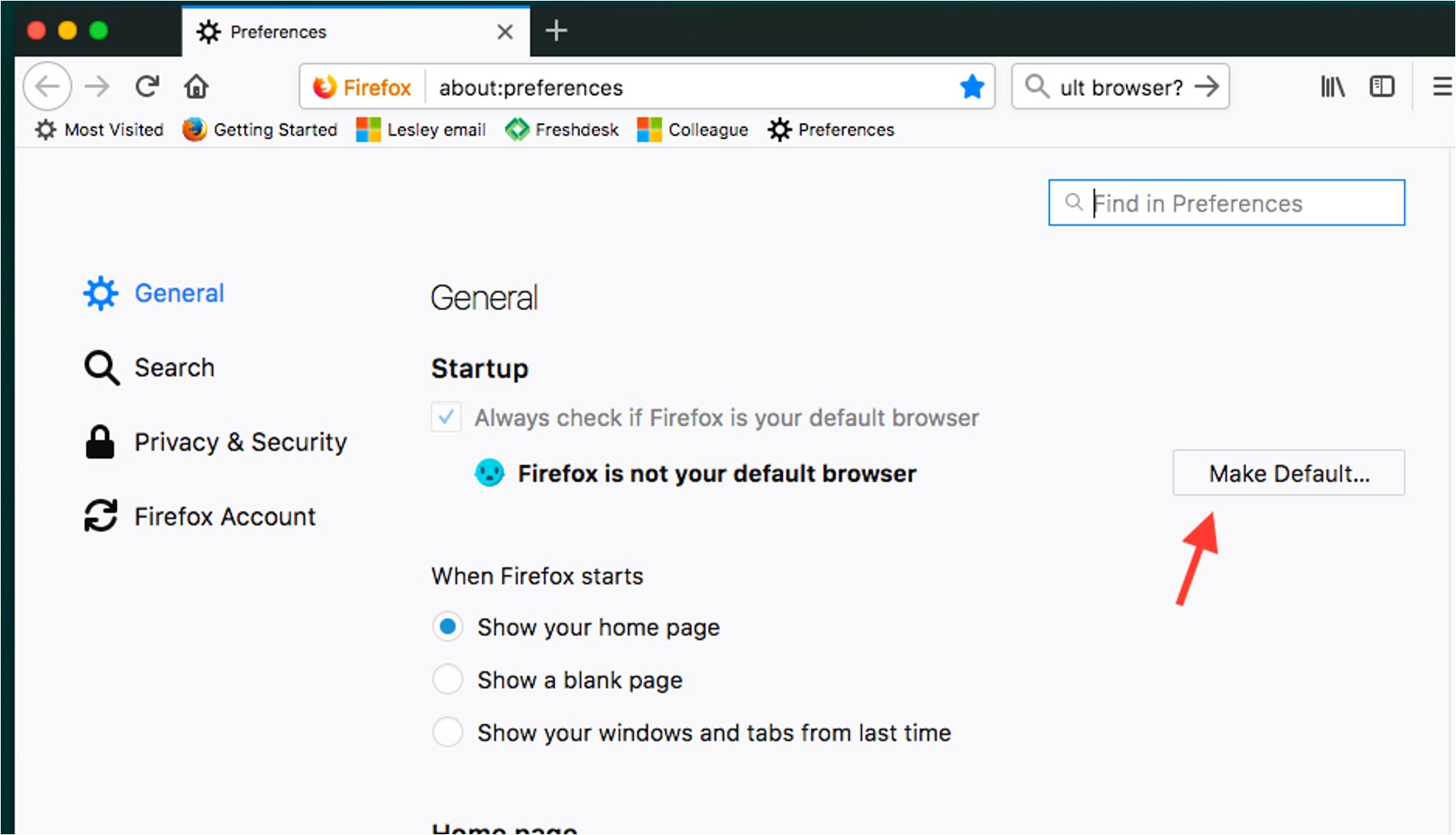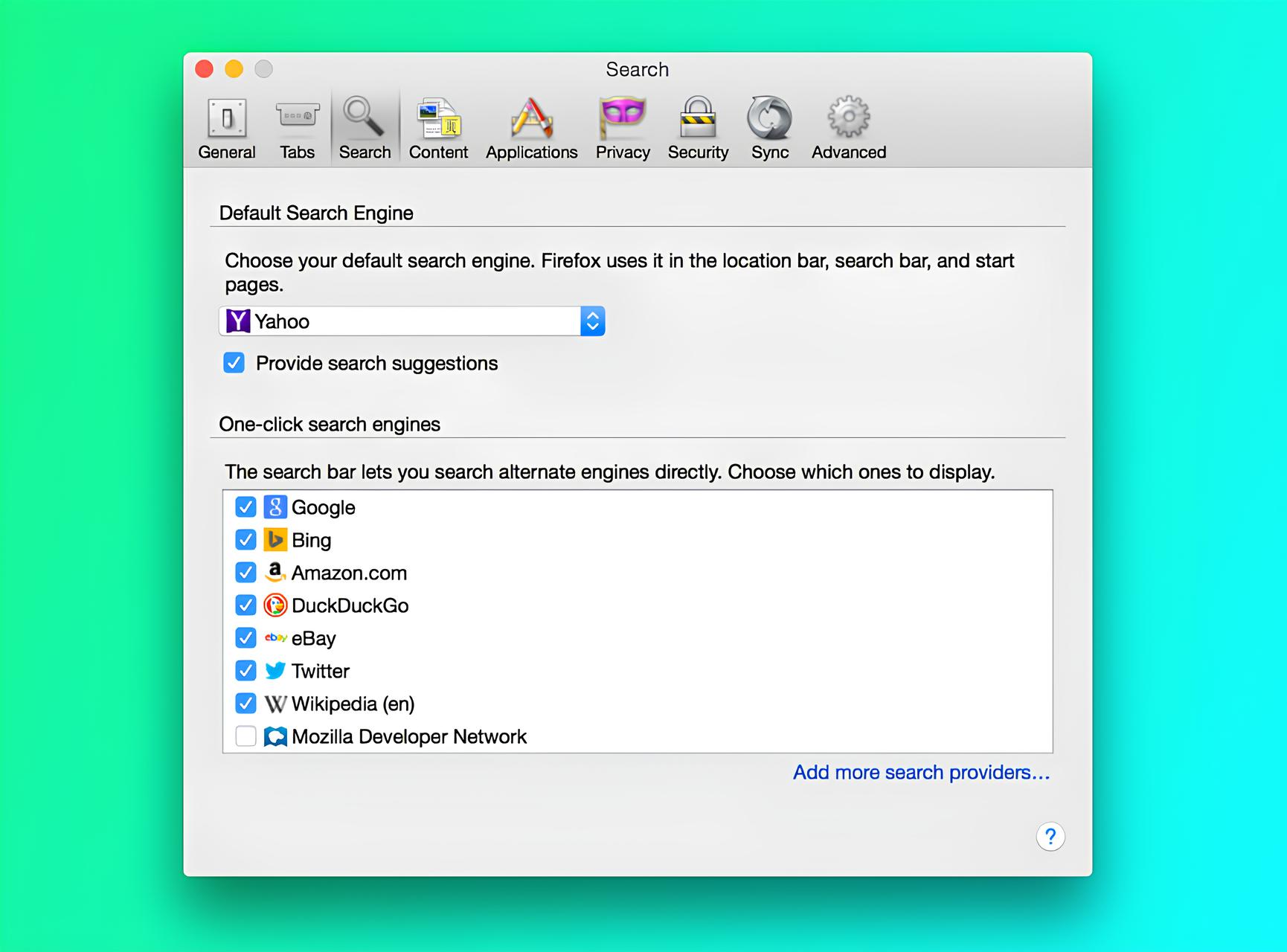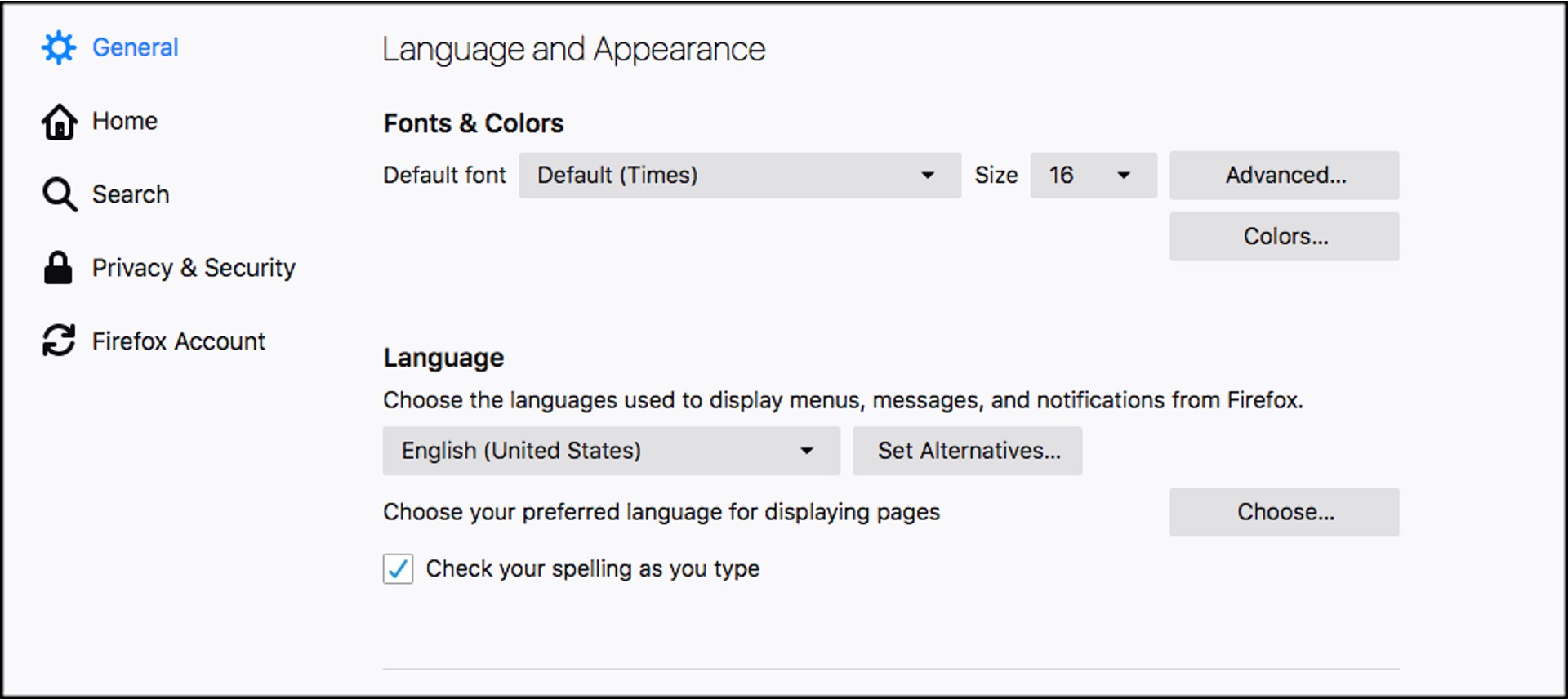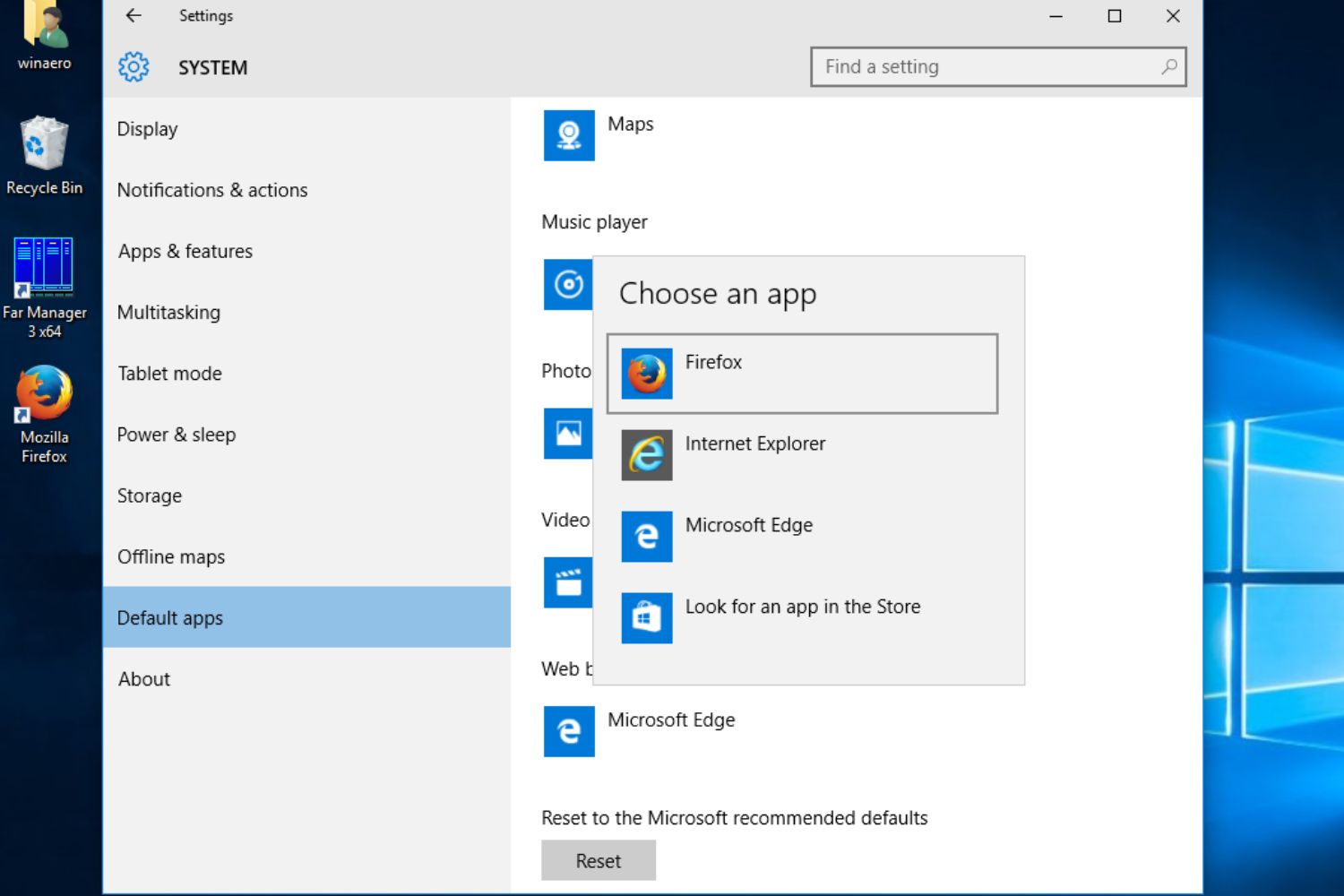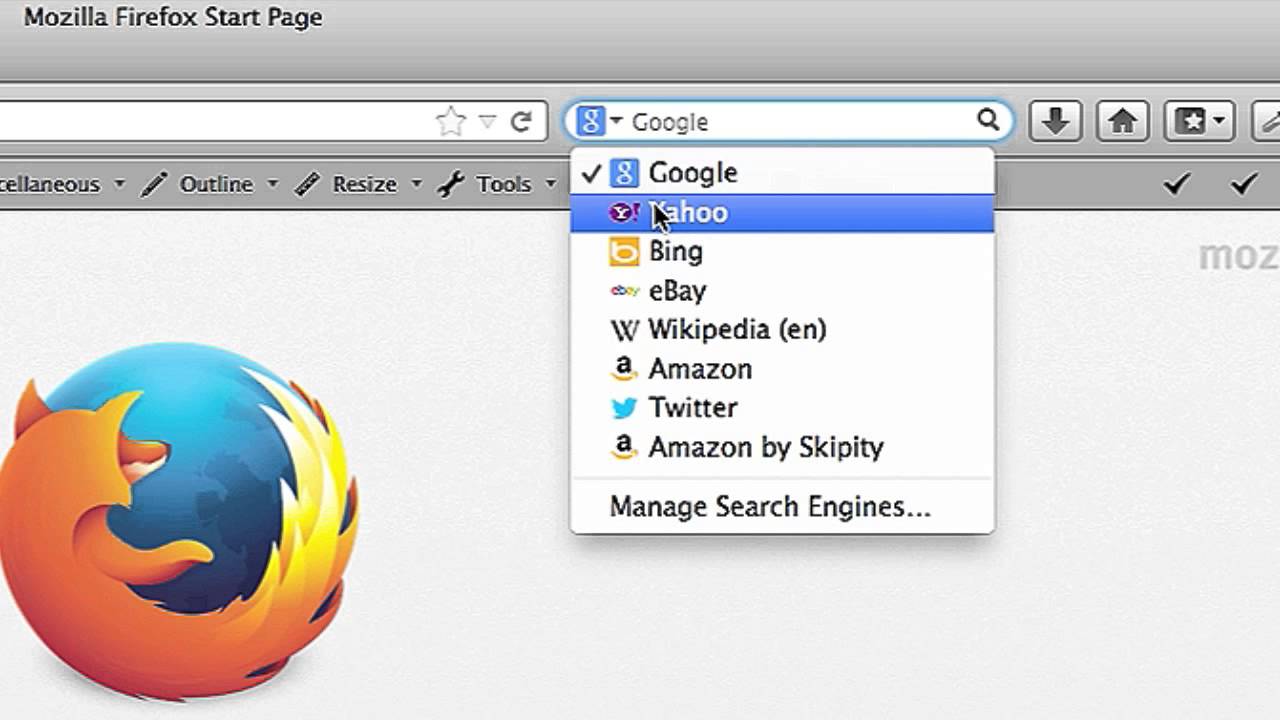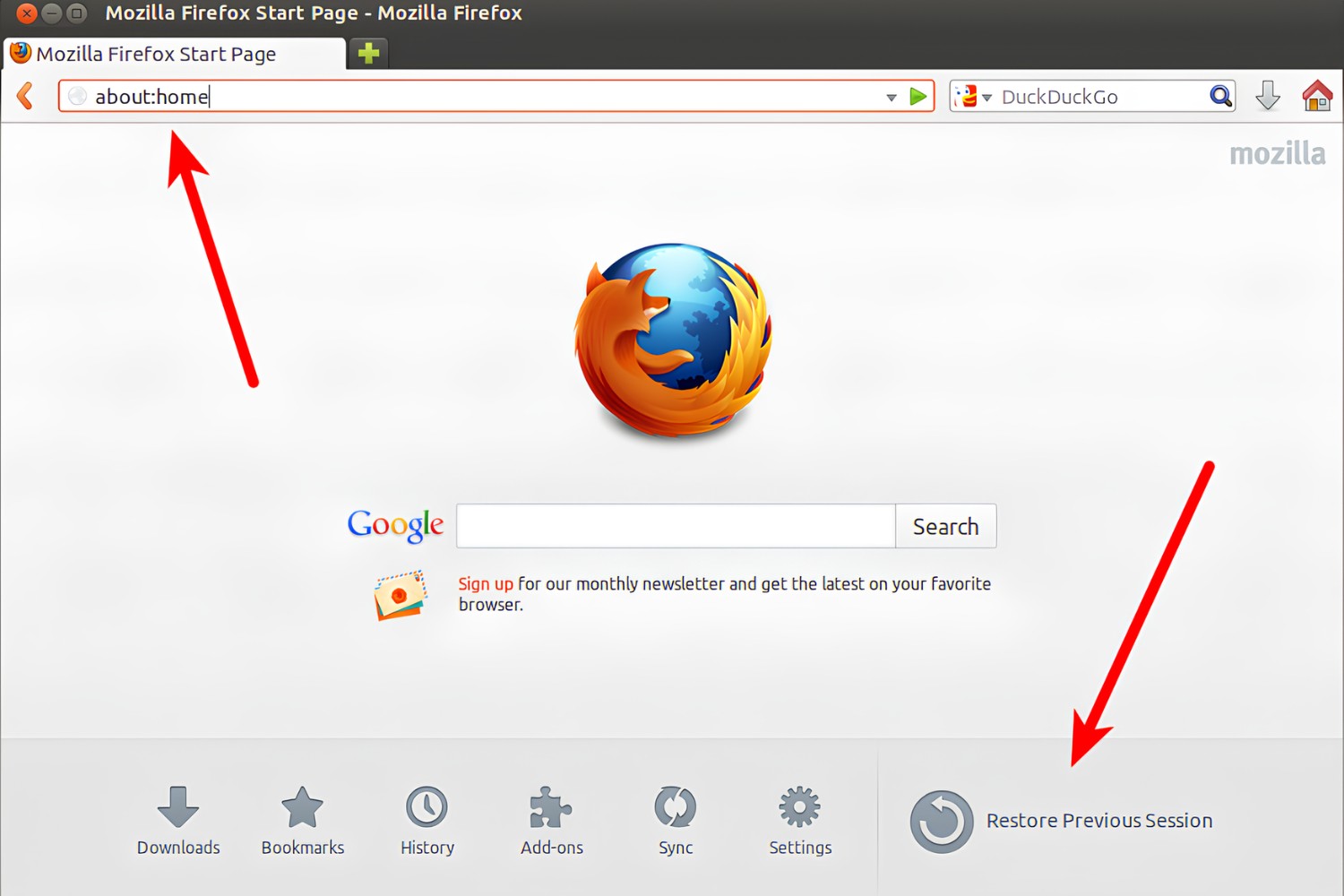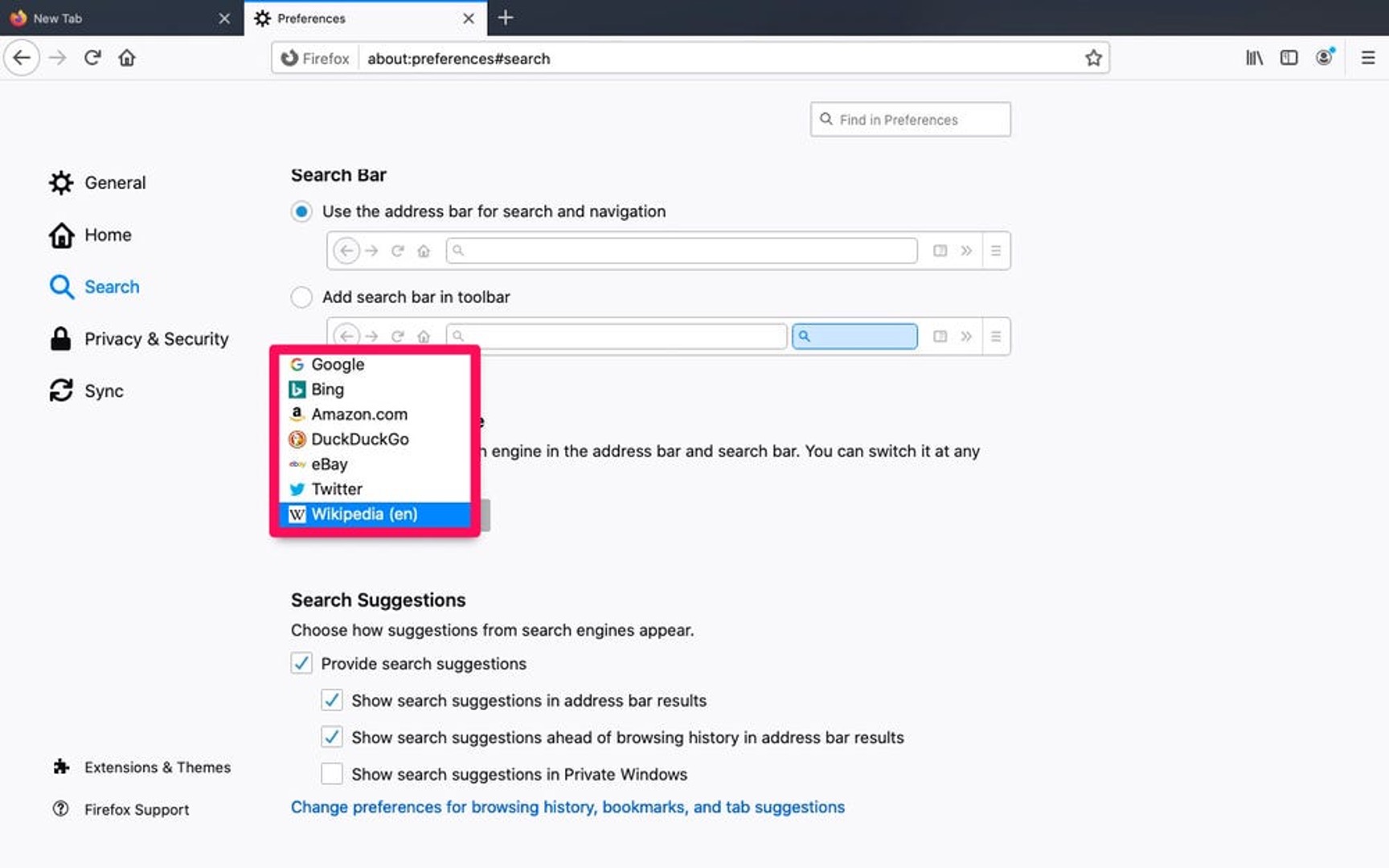Introduction
Setting Firefox as your default browser can enhance your browsing experience by ensuring that links and web pages open directly in Firefox. Whether you're using a Windows, Mac, or Linux operating system, the process of setting Firefox as your default browser is straightforward and can be completed in just a few simple steps. By making Firefox your default browser, you can enjoy its user-friendly interface, customizable features, and robust security measures without the hassle of manually selecting it each time you open a link.
In the following sections, we will guide you through the process of setting Firefox as your default browser on various operating systems. You'll learn how to seamlessly integrate Firefox into your daily browsing activities, allowing you to harness its full potential as your go-to browser for exploring the web, accessing your favorite websites, and enjoying a secure and personalized online experience.
Whether you're a seasoned Firefox user looking to streamline your browsing habits or someone new to the browser seeking to make it your primary choice, this guide will equip you with the knowledge and confidence to set Firefox as your default browser with ease. Let's dive into the steps for Windows, Mac, and Linux, and empower you to take control of your browsing environment.
Step 1: Open Firefox
To begin the process of setting Firefox as your default browser, the first step is to open the Firefox application on your device. Whether you're using a Windows, Mac, or Linux operating system, launching Firefox is the initial action that sets the stage for customizing your default browser settings.
Windows:
On a Windows computer, you can open Firefox by clicking on the Start menu, locating the Firefox icon in the list of installed applications, and then clicking on it. Alternatively, if you have a shortcut to Firefox on your desktop or taskbar, you can simply double-click the icon to launch the browser.
Mac:
For Mac users, opening Firefox is as simple as locating the application in the Applications folder or the Dock and clicking on the Firefox icon. You can also use Spotlight search by pressing Command + Space and typing "Firefox" to quickly locate and open the browser.
Linux:
If you're using a Linux distribution, you can open Firefox by accessing the applications menu, typically located in the bottom left or top left corner of the screen, and searching for "Firefox" in the list of installed applications. Once located, click on the Firefox icon to launch the browser and proceed with the next steps to set it as your default browser.
By opening Firefox, you gain access to its intuitive interface, powerful features, and extensive customization options. Whether you're drawn to Firefox for its privacy and security enhancements, its vast library of extensions and add-ons, or its seamless synchronization across devices, launching the browser is the pivotal first step toward making it your default choice for browsing the web.
With Firefox now open on your device, you're ready to delve into the subsequent steps tailored to your specific operating system, allowing you to seamlessly integrate Firefox as your default browser and unlock its full potential for a personalized and secure browsing experience.
Step 2: Set Firefox as Default Browser on Windows
Setting Firefox as your default browser on a Windows operating system is a straightforward process that ensures all web links and HTML files open directly in Firefox. By making Firefox your default browser, you can seamlessly integrate it into your daily browsing activities, enhancing your online experience with its user-friendly interface, robust security features, and extensive customization options.
To set Firefox as your default browser on Windows, follow these simple steps:
-
Open Firefox Options:
- Launch Firefox on your Windows computer.
- Click on the three horizontal lines in the upper-right corner to open the menu.
- Select "Options" from the dropdown menu. This will open the Firefox Options tab.
-
Navigate to General Settings:
- In the Firefox Options tab, click on "General" in the left-hand sidebar. This will display general settings for the browser.
-
Set Firefox as Default Browser:
- Scroll down to the "Startup" section within the General settings.
- Here, you will find the "Make Default" button next to "Firefox is not your default browser." Click on this button to open the Default Apps section in Windows Settings.
-
Choose Default Browser:
- In the Default Apps section of Windows Settings, scroll down to the "Web browser" option.
- Click on the current default browser listed under "Web browser." A list of installed web browsers, including Firefox, will appear.
-
Select Firefox as Default:
- Locate and click on "Firefox" in the list of web browsers. This will set Firefox as your default browser, and the Default Apps window will close automatically.
-
Confirmation:
- Return to the Firefox Options tab to verify that Firefox is now set as your default browser. You should see a message indicating that Firefox is your default browser.
By following these steps, you have successfully set Firefox as your default browser on your Windows computer. From this point forward, all web links and HTML files will automatically open in Firefox, streamlining your browsing experience and allowing you to fully leverage the features and security measures offered by Firefox.
With Firefox as your default browser, you can explore the web with confidence, knowing that you have seamlessly integrated a trusted and customizable browser into your Windows environment. Whether you're drawn to Firefox for its privacy protections, extensive library of extensions, or intuitive interface, setting it as your default browser empowers you to make the most of your online activities while enjoying a personalized and secure browsing experience.
Step 3: Set Firefox as Default Browser on Mac
Setting Firefox as your default browser on a Mac is a simple and effective way to ensure that all web links and HTML files open directly in Firefox. By making Firefox your default browser, you can seamlessly integrate it into your browsing routine, taking advantage of its user-friendly interface, robust security features, and extensive customization options.
To set Firefox as your default browser on a Mac, follow these straightforward steps:
-
Open Firefox Preferences:
- Launch Firefox on your Mac computer.
- Click on "Firefox" in the top-left corner of the screen to open the Firefox menu.
- Select "Preferences" from the dropdown menu. This will open the Firefox Preferences window.
-
Navigate to General Settings:
- In the Firefox Preferences window, click on "General" at the top of the window. This will display general settings for the browser.
-
Set Firefox as Default Browser:
- Look for the "Make Default" button next to "Firefox is not currently your default browser." Click on this button to open the "Default web browser" window in System Preferences.
-
Choose Default Browser:
- In the "Default web browser" window, you will see a list of installed web browsers, including Firefox.
- Click on the current default browser listed under "Default web browser." This will display a dropdown menu of available web browsers.
-
Select Firefox as Default:
- Locate and click on "Firefox" in the dropdown menu. This action sets Firefox as your default browser, and the "Default web browser" window will close automatically.
-
Confirmation:
- Return to the Firefox Preferences window to verify that Firefox is now set as your default browser. You should see a message indicating that Firefox is your default browser.
By following these steps, you have successfully set Firefox as your default browser on your Mac. From this point forward, all web links and HTML files will automatically open in Firefox, streamlining your browsing experience and allowing you to fully leverage the features and security measures offered by Firefox.
With Firefox as your default browser, you can explore the web with confidence, knowing that you have seamlessly integrated a trusted and customizable browser into your Mac environment. Whether you're drawn to Firefox for its privacy protections, extensive library of extensions, or intuitive interface, setting it as your default browser empowers you to make the most of your online activities while enjoying a personalized and secure browsing experience.
Step 4: Set Firefox as Default Browser on Linux
Setting Firefox as your default browser on a Linux operating system is a seamless process that ensures all web links and HTML files open directly in Firefox. By making Firefox your default browser, you can effortlessly integrate it into your browsing routine, taking advantage of its user-friendly interface, robust security features, and extensive customization options.
To set Firefox as your default browser on Linux, follow these straightforward steps:
-
Open Firefox Preferences:
- Launch Firefox on your Linux computer.
- Click on the three horizontal lines in the upper-right corner to open the menu.
- Select "Preferences" from the dropdown menu. This will open the Firefox Preferences tab.
-
Navigate to General Settings:
- In the Firefox Preferences tab, click on "General" in the left-hand sidebar. This will display general settings for the browser.
-
Set Firefox as Default Browser:
- Scroll down to the "Startup" section within the General settings.
- Here, you will find the "Make Default" button next to "Firefox is not your default browser." Click on this button to open the Default Applications window.
-
Choose Default Browser:
- In the Default Applications window, scroll down to the "Web Browser" option.
- Click on the current default browser listed under "Web Browser." A list of installed web browsers, including Firefox, will appear.
-
Select Firefox as Default:
- Locate and click on "Firefox" in the list of web browsers. This action sets Firefox as your default browser, and the Default Applications window will close automatically.
-
Confirmation:
- Return to the Firefox Preferences tab to verify that Firefox is now set as your default browser. You should see a message indicating that Firefox is your default browser.
By following these steps, you have successfully set Firefox as your default browser on your Linux system. From this point forward, all web links and HTML files will automatically open in Firefox, streamlining your browsing experience and allowing you to fully leverage the features and security measures offered by Firefox.
With Firefox as your default browser, you can explore the web with confidence, knowing that you have seamlessly integrated a trusted and customizable browser into your Linux environment. Whether you're drawn to Firefox for its privacy protections, extensive library of extensions, or intuitive interface, setting it as your default browser empowers you to make the most of your online activities while enjoying a personalized and secure browsing experience.
Conclusion
In conclusion, setting Firefox as your default browser is a simple yet impactful way to personalize your browsing experience across Windows, Mac, and Linux operating systems. By seamlessly integrating Firefox into your daily web exploration, you gain access to its user-friendly interface, robust security features, and extensive customization options. Whether you're drawn to Firefox for its privacy protections, vast library of extensions, or intuitive interface, making it your default browser empowers you to make the most of your online activities while enjoying a personalized and secure browsing experience.
By following the step-by-step instructions tailored to your specific operating system, you've learned how to set Firefox as your default browser with ease. This process ensures that all web links and HTML files open directly in Firefox, streamlining your browsing experience and allowing you to fully leverage the features and security measures offered by Firefox.
As your default browser, Firefox becomes an integral part of your digital routine, offering a seamless and reliable gateway to the web. Whether you're exploring the latest news, conducting research, or connecting with others online, Firefox serves as a trusted companion, providing a secure and customizable platform for your browsing needs.
Furthermore, by setting Firefox as your default browser, you're embracing a browser that prioritizes user privacy and security. With features such as enhanced tracking protection, password management, and regular security updates, Firefox offers a robust defense against online threats, allowing you to browse with confidence and peace of mind.
Additionally, the extensive customization options available in Firefox, including themes, extensions, and sync capabilities, enable you to tailor your browsing environment to suit your preferences and streamline your online activities. Whether you're organizing your bookmarks, enhancing productivity with add-ons, or syncing your browsing history across devices, Firefox empowers you to create a personalized and efficient browsing experience.
In essence, setting Firefox as your default browser marks the beginning of a seamless and enriching journey through the digital landscape. By embracing Firefox as your go-to browser, you're not only enhancing your browsing experience but also aligning with a browser that values user empowerment, privacy, and security.
As you embark on your browsing endeavors with Firefox as your default browser, you can navigate the web with confidence, knowing that you've seamlessly integrated a trusted and customizable browser into your daily digital interactions. Whether you're a seasoned Firefox user or someone new to the browser, setting it as your default choice empowers you to explore the web on your terms, with security, privacy, and personalization at the forefront of your online experience.







